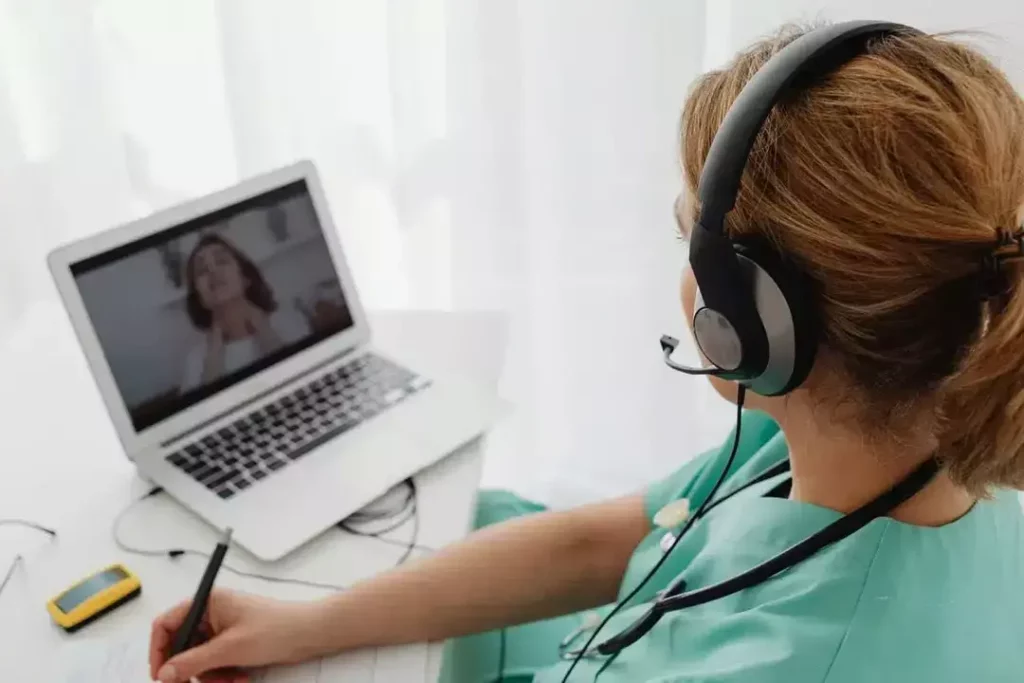
How Remote Operations Are Reshaping Healthcare Delivery
In the age of digital transformation, the healthcare industry is undergoing a significant overhaul. One of the most promising trends is the adoption of remote operations, which is revolutionizing the way healthcare services are delivered. With a doctor-to-patient ratio of 1:1511 in India, well below WHO norms, remote operations are providing a much-needed solution to expand access to healthcare in underserved areas. In this blog post, we will explore how remote operations, powered by telemedicine, IoT devices, and cloud-based platforms, are reshaping healthcare delivery.
The Emergence of Telemedicine
Telemedicine, a key component of remote operations, has been gaining popularity in recent years. This technology enables patients to consult doctors remotely, reducing the need for physical visits to hospitals or clinics. Telemedicine platforms use video conferencing tools, messaging apps, and other digital communication channels to connect patients with healthcare professionals. This not only increases accessibility but also reduces healthcare costs.
One of the pioneers in telemedicine is Apollo Hospitals, India’s largest healthcare chain. They launched their telemedicine platform, Apollo Telemedicine, in 2005. The platform has since treated over 1 million patients, with a significant reduction in healthcare costs. Apollo Telemedicine has also expanded its services to rural areas, where access to healthcare is limited.
The Role of IoT Devices
IoT devices are another crucial element in remote operations. These devices are used to monitor patients remotely, track their vital signs, and collect data on their health. IoT devices can be installed in patients’ homes, clinics, or even hospitals, providing real-time data to healthcare professionals.
For instance, the University of California, San Francisco (UCSF) has developed a remote monitoring system using IoT devices to track patients with chronic illnesses. The system uses sensors to monitor patients’ vital signs, such as blood pressure and heart rate, and sends the data to healthcare professionals for analysis. This has led to a significant reduction in hospital readmissions and improved patient outcomes.
Cloud-Based Platforms
Cloud-based platforms are also playing a vital role in remote operations. These platforms provide a secure and scalable infrastructure for storing and analyzing vast amounts of healthcare data. Cloud-based platforms can be accessed from anywhere, making it easier for healthcare professionals to collaborate and share data.
One example of a cloud-based platform is Medtronic’s CareLink, a remote monitoring system that tracks patients with chronic conditions. The system uses cloud-based technology to collect and analyze data from patients’ medical devices, providing healthcare professionals with real-time insights. This has led to improved patient outcomes and reduced healthcare costs.
Startups Are Leading the Charge
Startups are also playing a significant role in remote operations, leveraging technologies like AI and machine learning to improve healthcare outcomes. For instance, startups like Meddo and Teleconsult are using AI-powered chatbots to triage patients and provide them with preliminary diagnoses. These startups are also using machine learning algorithms to analyze patient data and provide personalized treatment plans.
Another example is Ziqitza Health Care Limited, which has developed an AI-powered platform for remote patient monitoring. The platform uses machine learning algorithms to analyze patient data and identify potential health risks. This has led to improved patient outcomes and reduced healthcare costs.
Hospitals Are Adopting Remote Monitoring
Hospitals are also adopting remote monitoring to cut costs and improve patient outcomes. For instance, the University of Texas MD Anderson Cancer Center has developed a remote monitoring system using IoT devices to track patients with cancer. The system uses sensors to monitor patients’ vital signs and sends the data to healthcare professionals for analysis.
Similarly, the University of California, Los Angeles (UCLA) has developed a remote monitoring system using IoT devices to track patients with chronic illnesses. The system uses sensors to monitor patients’ vital signs and sends the data to healthcare professionals for analysis.
Challenges and Opportunities
While remote operations are revolutionizing healthcare delivery, there are several challenges that need to be addressed. One of the biggest challenges is data security, as healthcare data is highly sensitive and requires robust security measures.
Another challenge is the need for standardization, as different healthcare providers and startups are using different technologies and platforms. Standardization will be crucial in ensuring interoperability and seamless data sharing.
Despite these challenges, remote operations present significant opportunities for healthcare providers, startups, and patients alike. With remote operations, healthcare providers can expand access to underserved areas, reduce healthcare costs, and improve patient outcomes.
Conclusion
In conclusion, remote operations are revolutionizing healthcare delivery in India and around the world. Telemedicine, IoT devices, and cloud-based platforms are providing a much-needed solution to expand access to healthcare in underserved areas. Startups are leading the charge, leveraging technologies like AI and machine learning to improve healthcare outcomes. Hospitals are also adopting remote monitoring to cut costs and improve patient outcomes.
As the healthcare industry continues to evolve, remote operations will play an increasingly important role. With the right technology, infrastructure, and standardization, remote operations have the potential to transform healthcare delivery and improve patient outcomes.
News Source:






